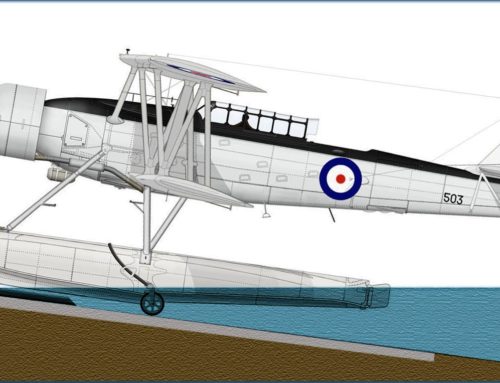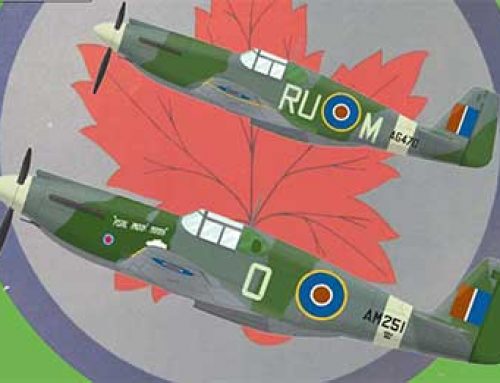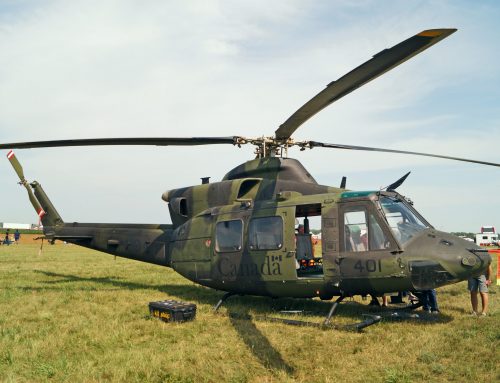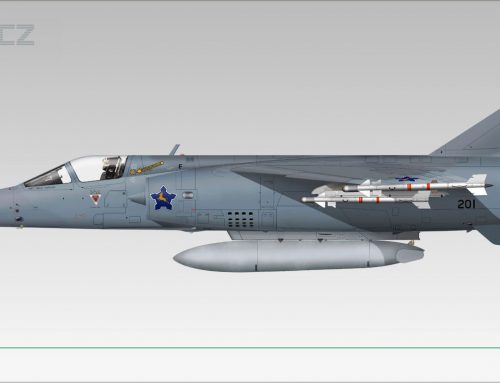David L.
What is the most respected Luftwaffe RLM paint chip reference?
April 30 08:43 2010
The following publications include actual RLM paint chips. Whom do PLANE TALKING Experten consider the best, most reliable, and most respected Luftwaffe colour reference?
1. Merrick/Hitchcock, MONOGRAM PUBLICATIONS (1980)
2. Ullman, HIKOKI (2002)
3. Merrick with Kiroff, 2 vols., CLASSIC, (2004)
4. Crandall, EAGLE EDITIONS (ca. 2006)
5. Other
Inquiring minds want to know!
David E. Brown
State of the art
April 30 10:01 2010
One must appreciate that knowledge of this subject has been evolving and growing for the past 40+ years. Over time, each researcher has built upon the foundations established by his peers and incorporating new information and discoveries. And most importantly, shared them with fellow enthusiasts and the greater community of interest. We have all benefited from their efforts.
I thus believe that the story is by no means complete and new information will add to and further refine our knowledge on this fascinating subject. That being said, I recommend watching what will be revealed by our friends in the Czech Republic sometime in the foreseeable future.
Remember this? http://www.letletlet-warplanes.com
David L. Veres
I didn’t catch this news from the Czech Republic
April 30 11:30 2010
Could the exigencies of the Reich’s collapsing military and industry have seriously affected quality control?
So might surviving Czech paint samples further reflect equally collapsing adherence to RLM standards?
Still, thanks for bringing this to my attention!
G. Kent Roberts
There isn’t one
April 30 10:13 2010
They all claim to be the best but the debate is never ending. See if you can collect them all and then make up your own mind.
This topic gets hashed out frequently, but like the Energizer Bunny, it just keeps going and going and going.
Nicholas Mayhew
Uber-colour accuracy irrelevant
April 30 10:56 2010
Just playing devil’s advocate, but isn’t this grail-like quest for colour accuracy a bit irrelevant given both weathering (real and modelled) and the way colours are often lightened for “scale effect”?
As long as you use a colour that’s close enough, I personally don’t think it makes any difference.
Pat Donahue
With all the thousands of gallons of RLM paint…
April 30 11:43 2010
…manufactured during the existence of the Luftwaffe, I am sure there were many acceptable deviations due to mixing, production tolerance, forced substitutions, change of formula, etc, etc. So I would say that there was no one standard that could be called the standard. Tom Hitchcock told me he had the opportunity to examine 5 different examples of RLM 74 and none matched one another. During WW2 Floquil made paints for the military and the best they could do was 90% matching due to forced substitutions, production tolerance, etc. I imagine that things were certainly worse in Germany especially as the war progressed. An edition of a LDV 521 RLM paint chart locked in a safe is truly a find but we are talking about colours that were produced 60+ years ago, so you have aging and [ultra-violet] factors to consider there, even with a pristine original colour swatch. Paint chemistry was very different back then, as to colour stability, etc. G. Kent in the above post gives good advice methinks….
Graham Boak
Variations on a theme
April 30 11:51 2010
It still helps to know what those legitimate variations were centred upon.
The chips in the Merrick books are not copied from aged chips (although any deterioration may be less than some imagine, if they were cared for properly), but regenerated from the original company paint records by the manufacturer. I suspect the result is rather more credible than all the whinging from the knockers.
Pat Donahue
Correct Graham
April 30 12:03 2010
I also believe the Eagles chart was based on paint formulae. We also know that the standards for some colours RLM 66, 65, etc. were changed, with the colours having a somewhat different appearance. I also seem to remember that there is a notation in one of the above-mentioned books, from the RLM to the effect that some colours (IIRC RLM 02) could not be expected to maintain the colour appearance as shown on the LDV chart, due to the wartime shortages. It has always fascinated me how the appearance of RLM 75 is so much lighter in many photos than the chips show, not to mention how lighter and washed out RLM 76 seemed to get in the final year of the war.
Evidently, there is evidence that RLM 81’s appearance may have been affected by which specific factory produced the paint.
Graham Boak
Most paints look lighter on aircraft than on the chip
April 30 12:33 2010
One way to reduce this is to make a mid-gray mask, a piece of card with a window in it so that the colour you see does not have the high contrast with the white background of most chips. Some of the rest is due to the film stock used, the loss of intensity with distance, and that aircraft are usually covered with a fine layer of dust that tones down any strong hue.
As for the variations with time that you mention: yes, that’s part of what makes it such a fascinating subject.
Jerry Crandall
The problem
April 30 13:00 2010
Very interesting discussion as always, about references of RLM colours and chips.
The big problem with recently produced colour charts using original formulas is that the original WW2 raw materials are no longer available. This is due to the fact that those materials were lead based and have not been available for many years, having been proved to be toxic.
We, Jerry and Judy Crandall at Eagle Editions, had nothing to do with the paint colours produced by Warnecke and B̦hm; we simply purchased the chips. These chips were supervised by Gunther Wildmoser and Ken Bokelman, both of whom have passed away. Warnecke and B̦hm did not produce these chips from period formulas, but from existing samples in good condition. We were asked by Warnecke and B̦hm if we wanted to purchase these existing chips, which we did and then marketed in our colour chart.
During our visit to Warnecke and B̦hm, they were kind enough to give us all their original existing RLM paint formulas which we published in the Fw 190 Dora Vol. Two book. Amazingly enough, they told us that no researcher had ever visited them inquiring about WW2 RLM colours!
My first question was – since we have the original formulas in hand, could they manufacture these colours to the original WW2 specifications? They answered emphatically NO, as the chemicals and names listed in the formulas were no longer available and it would be impossible to make accurate substitutions.
The best reference for accurate RLM colours are recovered parts that have the paint in preserved condition of which there are many examples. Comparing recovered examples in good condition from different types of a/c recovered from different areas in different soil conditions and if they match up, this is a pretty good source.
In our collection we have owned two original colour charts from 1938, and several of the colour chips did not exactly match. Another good point made by Graham Boak is that paint chips are 100% colour, applied very heavily. A lot of paint found on recovered Luftwaffe a/c, the paint varied as to the amount – some was simply fogged on, which in looking at a black and white photo is very difficult to determine the exact colour we are looking at. One problem consistent with all published colour charts that I’m aware of, is RLM 75 is always too dark. Look at any period photo and compare the contrast between the photograph and the published chips.
Lynn
Thank you for those observations
April 30 13:18 2010
If I’ve learned anything from you over the past 13 years, it’s that there is seldom a “hard and fast” rule when it comes to something like paint. As others have also noted, there are so many possible variables which affect the appearance of the final finish that the best that can possibly be hoped for is something which gives the “feel” of the original item in terms of tonal variation and hue. Paint chips (even your outstanding examples) are interesting as a starting point for discussion, but should not be held as absolute proof of any application.
Or, in other words, “That looks about right” will always be the best possible result.
Graham Boak
However, I refer people to the appendix of Merrick’s books
April 30 14:19 2010
Wherein you will find a description of how consultation with the original specifications and records lead Herr Kiroff to determine the original brand names for the constituents. These were then identified by the current owners of the companies involved, the materials gathered, the paints created, and tested against the spectral values provided by the RAL. This is only a brief summary of the text.
“Thus a combination of original technology, ingredients and the spectral measurements of the RAL have been employed to reverse engineer the original paints.”
When the paint industry’s own experts differ, we modellers are left to choose. It is always possible to believe that something is too difficult, when it may be only be very difficult. It is often amazing what can be achieved if difficulties are addressed, rather than merely recognised. Or perhaps to be misled…
David Aiken
You are quite correct
April 30 15:19 2010
The modeller seeks the middle of the RANGE…that is what is being called the “standard”…and we also need to know the RANGE, the deviation from the “standard”.
Mike Maben
Another important factor rarely discussed
April 30 17:25 2010
The lighting your model is sitting under. Since all colour is reflected light, change the lighting, change the colour.
G. Kent Roberts
Addendum
May 01 00:58 2010
Lest someone get the impression I was simply being flippant or disrespectful with my original response, I want to make it clear that I was not. After having collected 7 or 8 different sources on the topic through the years (starting with the early 1980s Monogram Paint Guide), I have been somewhat perplexed at the samples/examples that have been put forth as specific colours. Slight variations abound. Since I am only a casual student of the topic, I can’t comment any further on which ones are to be favoured over others. As others have pointed out many times though, it is useful to get a feel for the range of possibilities. Educated estimations are hard to disqualify.
source: Hyperscale
(thanks to Brett Green for permission)





